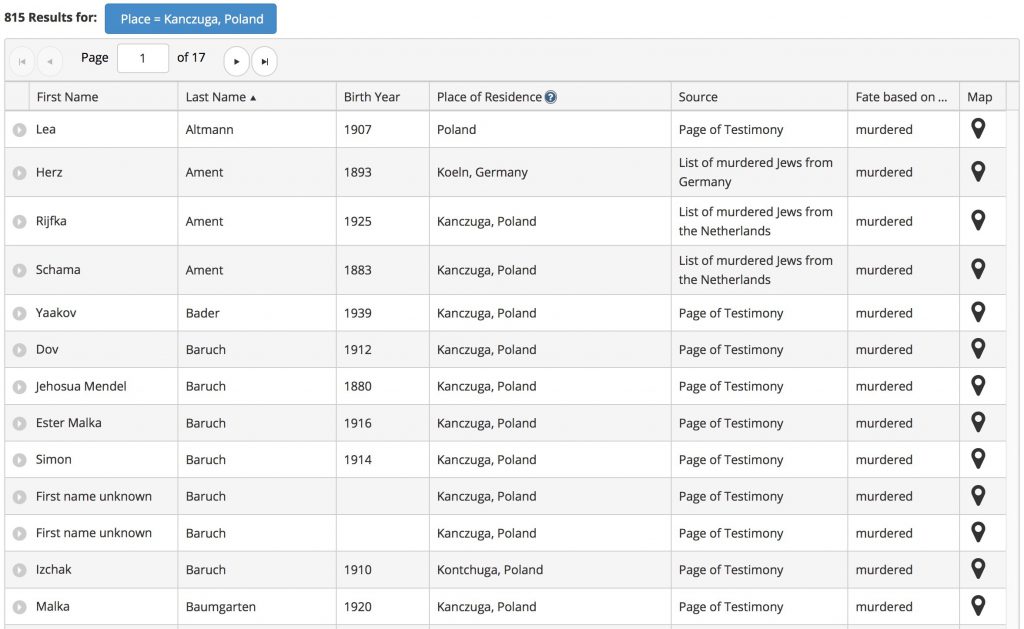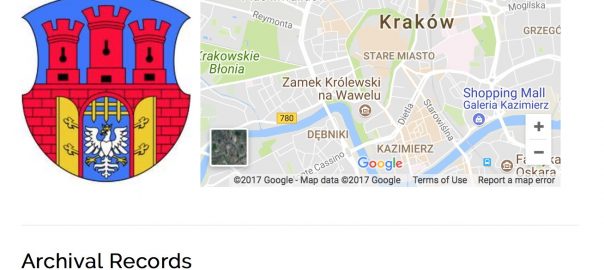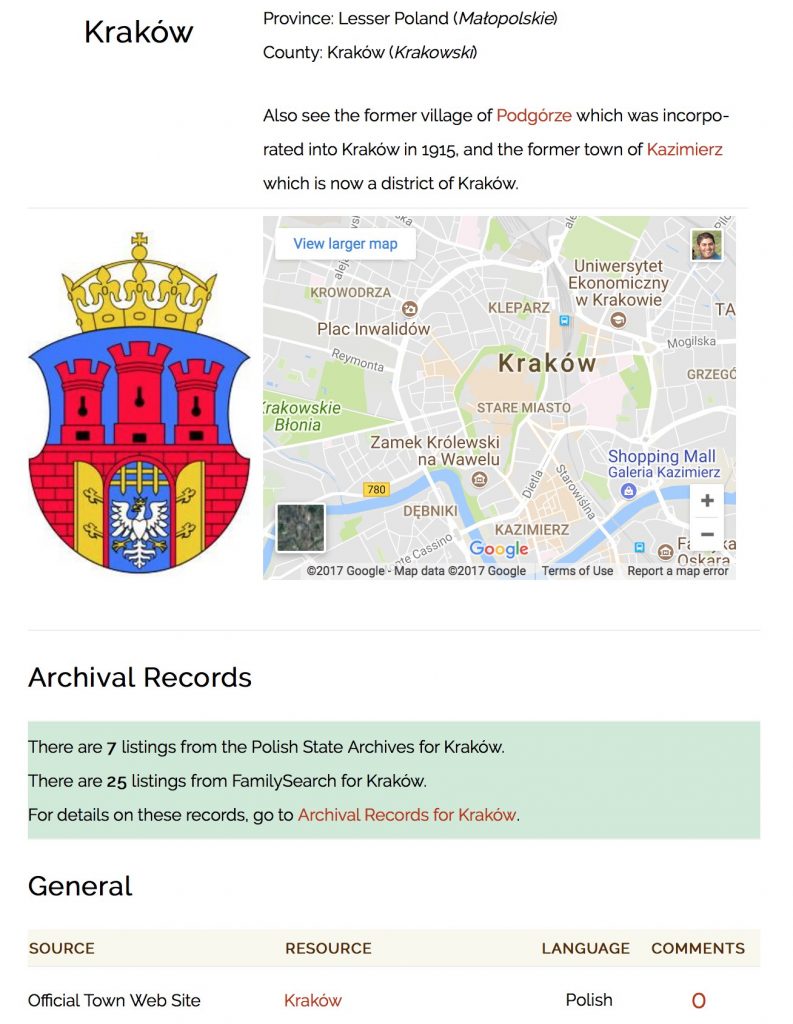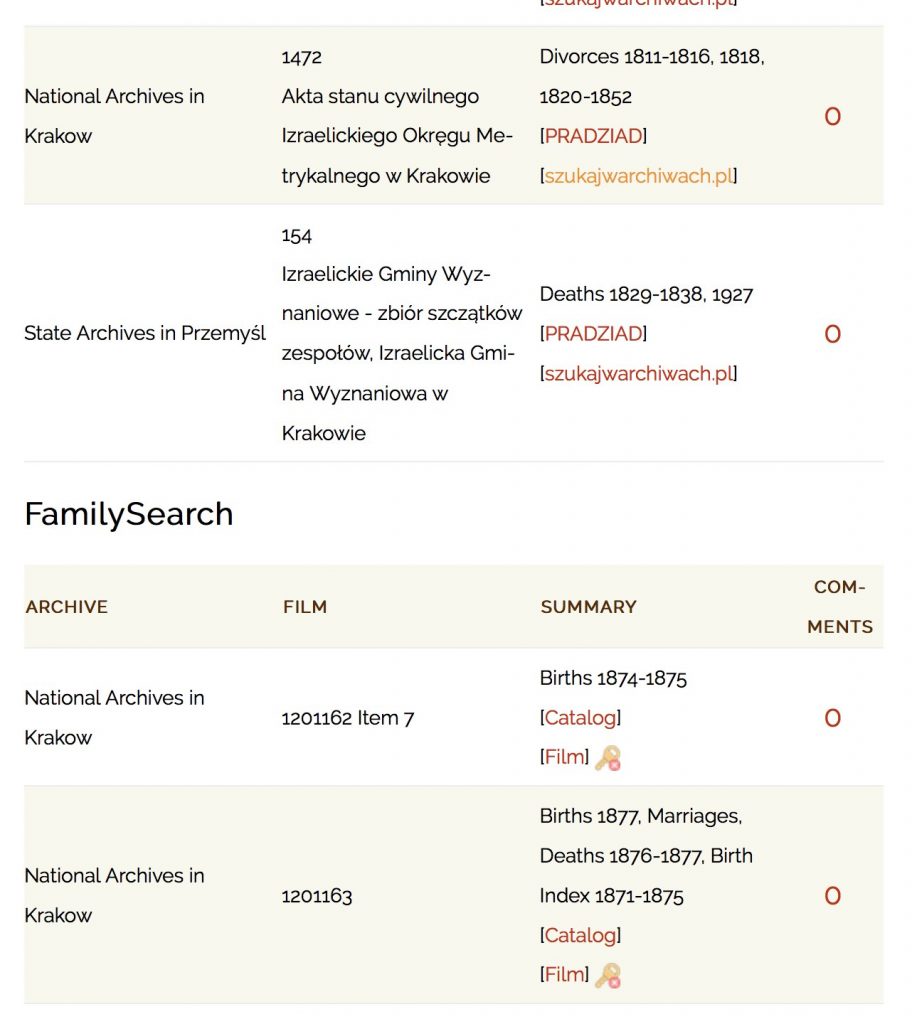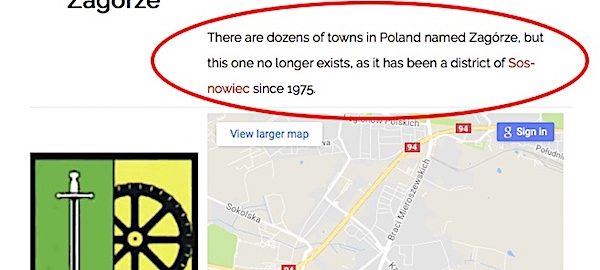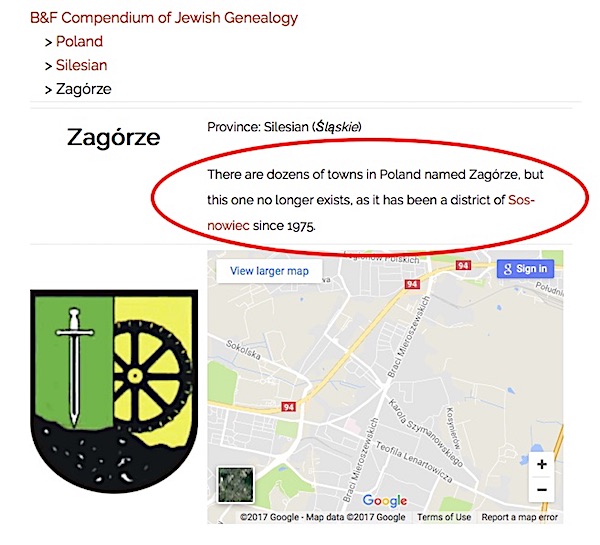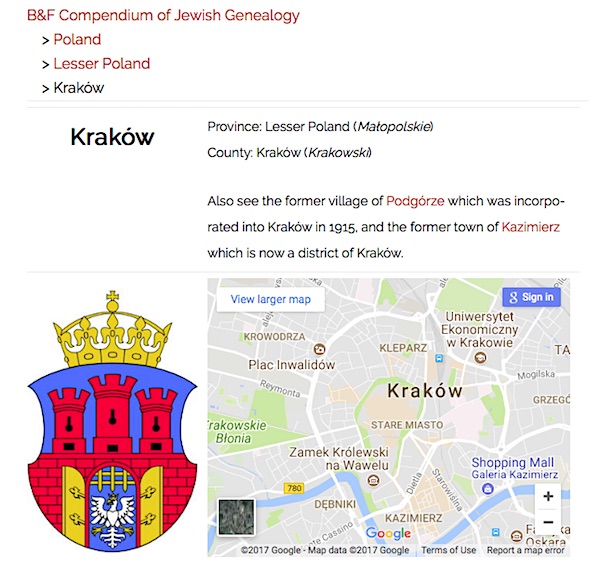I’ve long been an advocate of using newspapers in genealogy research. I’ve had particular success using newspapers in my research, and advocate for others to use them as well, as far back as my Genealogy Basics: Historical Newspapers article in 2011 (not long after starting this blog). 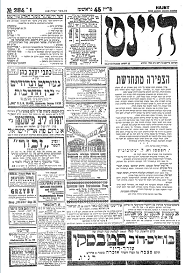 Other bloggers such as Kenneth Marks at The Ancestor Hunt have done excellent jobs of collecting some links to Jewish newspaper archives (see his article Historical Jewish American Newspapers Online which is obviously focused on US newspapers). The whole idea of the Compendium, however, is to present users with resources when looking at the page representing the locality they are researching. If you’re researching Międzyrzec Podlaski, you may not know that there is an online digitized newspaper from that town, or if you’re researching family from Morocco, you might not know there are at least five online digitized newspapers available from that country.
Other bloggers such as Kenneth Marks at The Ancestor Hunt have done excellent jobs of collecting some links to Jewish newspaper archives (see his article Historical Jewish American Newspapers Online which is obviously focused on US newspapers). The whole idea of the Compendium, however, is to present users with resources when looking at the page representing the locality they are researching. If you’re researching Międzyrzec Podlaski, you may not know that there is an online digitized newspaper from that town, or if you’re researching family from Morocco, you might not know there are at least five online digitized newspapers available from that country.
To that end, I’ve now added a new category of resources to the B&F Compendium of Jewish Genealogy – Newspapers.  This is a work in progress, but to start out I have added links to searchable archives of over 200 newspapers. I have added these to the place of publication of these newspapers, although their reach is sometimes much wider. Links are only to archives of newspapers, not to current newspapers (unless they have an archive of older papers, in which case I point directly to that archive).
This is a work in progress, but to start out I have added links to searchable archives of over 200 newspapers. I have added these to the place of publication of these newspapers, although their reach is sometimes much wider. Links are only to archives of newspapers, not to current newspapers (unless they have an archive of older papers, in which case I point directly to that archive).
In the the case of newspapers published in what is now Poland, I have placed them in the town pages for the town in which they were published. For Warsaw, this is a considerable number, but what I found interesting were the other smaller towns for which there are archives of papers that as a researcher you may not have been aware of, and thus never checked. In Poland this includes newspapers in Białystok, Bielsko Biała, Chełm, Ełk, Kalisz, Kielce, Kraków, Łódź, Międzyrzec Podlaski, Piotrków Trybunalski, Tomaszów Mazowiecki, and Wrocław.
Most of these newspaper archives currently come from the Historical Jewish Press project, which is an amazing effort to digitize and make publicly available historical Jewish newspapers from around the world.  One small problem with the site is that it tends to list newspapers by the country they were in when published, and not by their current country. That means many people don’t realize when looking for newspapers from the countries their ancestors lived in, that they’re not listed under Ukraine, but under Austria or Russia, or they’re not listed under Lithuania, but rather under Poland. I have tried my best to link to these newspapers to the countries their place of publication currently resides. This includes newspapers in Austria, Belarus, China, Egypt, France, Germany, Hungary, Israel, Lithuania, Morocco, Romania, Russia, Tunisia, Turkey, and Ukraine.
One small problem with the site is that it tends to list newspapers by the country they were in when published, and not by their current country. That means many people don’t realize when looking for newspapers from the countries their ancestors lived in, that they’re not listed under Ukraine, but under Austria or Russia, or they’re not listed under Lithuania, but rather under Poland. I have tried my best to link to these newspapers to the countries their place of publication currently resides. This includes newspapers in Austria, Belarus, China, Egypt, France, Germany, Hungary, Israel, Lithuania, Morocco, Romania, Russia, Tunisia, Turkey, and Ukraine.
For the United States, I’ve placed the newspaper links on the pages for the state where the newspaper was published, including California, Colorado, Florida, Illinois, Maryland, Massachusetts, Michigan, Missouri, Nebraska, New Jersey, New York, North Carolina, Pennsylvania, Ohio, Texas, and Virginia. 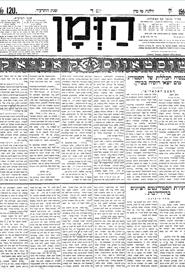 These newspapers are not exlcusively from the Historical Jewish Press project, but include links to sites in many places that have digitized newspapers, including the Chronicling America project from the Library of Congress, and many other local efforts across the United States.
These newspapers are not exlcusively from the Historical Jewish Press project, but include links to sites in many places that have digitized newspapers, including the Chronicling America project from the Library of Congress, and many other local efforts across the United States.
Please note that this is a first stab at adding newspapers, and even though I’ve added over 200 newspaper archives, there are certainly more out there, and I would greatly appreciate it if people could send me information on other newspaper archives available online that can be added. The best way to do this is to go to the page you think it should be added to, and clicking on the Add a Resource link at the bottom of the page. Please be as descriptive as possible, including the years of publication, the language, the frequency of publication (monthly, weekly, daily, etc.), and any official linkage, such as to a political party or other organization.
There are plenty of other newspapers that I’m aware of, but have not yet added, primarily due to language issues. Ohio State offers two great lists of digitized historic Jewish newspapers, in English and Hebrew, that contain many newspapers I have not yet linked to here.  That’s because while many newspapers are listed, there are no real descriptions like I have for other papers, and the languages are German, Yiddish and Hebrew in most cases, which means I need to spend more time going through them to collect the necessary information. Two resources specifically in German are Compact Memory which has hundreds of German Jewish newspapers and periodicals, and Jüdische Zeitschriften in NS-Deutschland, which has Jewish newspapers from the WWII period in Germany. As the New York Public Library’s guide to microfilms of Jewish newspapers shows, however, there are even more Jewish newspaper archives out there waiting to be digitized and put online.
That’s because while many newspapers are listed, there are no real descriptions like I have for other papers, and the languages are German, Yiddish and Hebrew in most cases, which means I need to spend more time going through them to collect the necessary information. Two resources specifically in German are Compact Memory which has hundreds of German Jewish newspapers and periodicals, and Jüdische Zeitschriften in NS-Deutschland, which has Jewish newspapers from the WWII period in Germany. As the New York Public Library’s guide to microfilms of Jewish newspapers shows, however, there are even more Jewish newspaper archives out there waiting to be digitized and put online.
So take a look at the countries, states, and towns your family came from, and see if there are newspapers listed. Have you looked at them in your research? Write about your experiences using newspapers in your research in the comments below, and submit newspaper archives not in the Compendium to the site so I can add them.


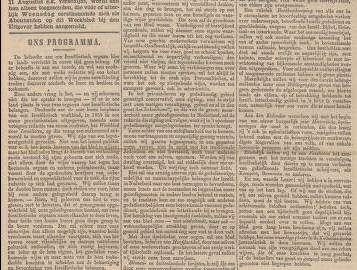
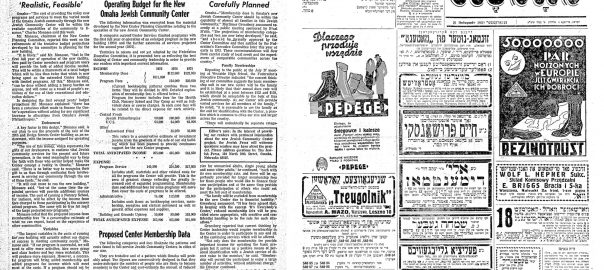
 Other bloggers such as Kenneth Marks at The Ancestor Hunt have done excellent jobs of collecting some links to Jewish newspaper archives (see his article
Other bloggers such as Kenneth Marks at The Ancestor Hunt have done excellent jobs of collecting some links to Jewish newspaper archives (see his article  This is a work in progress, but to start out I have added links to searchable archives of over 200 newspapers. I have added these to the place of publication of these newspapers, although their reach is sometimes much wider. Links are only to archives of newspapers, not to current newspapers (unless they have an archive of older papers, in which case I point directly to that archive).
This is a work in progress, but to start out I have added links to searchable archives of over 200 newspapers. I have added these to the place of publication of these newspapers, although their reach is sometimes much wider. Links are only to archives of newspapers, not to current newspapers (unless they have an archive of older papers, in which case I point directly to that archive). One small problem with the site is that it tends to list newspapers by the country they were in when published, and not by their current country. That means many people don’t realize when looking for newspapers from the countries their ancestors lived in, that they’re not listed under Ukraine, but under Austria or Russia, or they’re not listed under Lithuania, but rather under Poland. I have tried my best to link to these newspapers to the countries their place of publication currently resides. This includes newspapers in
One small problem with the site is that it tends to list newspapers by the country they were in when published, and not by their current country. That means many people don’t realize when looking for newspapers from the countries their ancestors lived in, that they’re not listed under Ukraine, but under Austria or Russia, or they’re not listed under Lithuania, but rather under Poland. I have tried my best to link to these newspapers to the countries their place of publication currently resides. This includes newspapers in  These newspapers are not exlcusively from the Historical Jewish Press project, but include links to sites in many places that have digitized newspapers, including the
These newspapers are not exlcusively from the Historical Jewish Press project, but include links to sites in many places that have digitized newspapers, including the  That’s because while many newspapers are listed, there are no real descriptions like I have for other papers, and the languages are German, Yiddish and Hebrew in most cases, which means I need to spend more time going through them to collect the necessary information. Two resources specifically in German are
That’s because while many newspapers are listed, there are no real descriptions like I have for other papers, and the languages are German, Yiddish and Hebrew in most cases, which means I need to spend more time going through them to collect the necessary information. Two resources specifically in German are 
